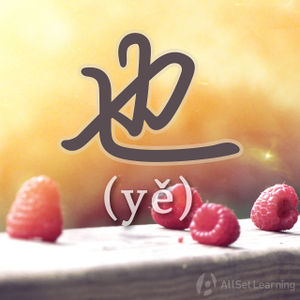Difference between revisions of "The "also" adverb "ye""
(→Also) |
(→Also) |
||
| Line 16: | Line 16: | ||
<div class="liju"> | <div class="liju"> | ||
| − | * 我 <em>也</em> 喜欢 吃 水饺。 | + | * 我 <em>也</em> 喜欢 吃 水饺。<span class="trans">I also like to eat boiled dumplings.</span> |
| − | * 你 <em>也</em> 喜欢 喝 啤酒 吗? | + | * 你 <em>也</em> 喜欢 喝 啤酒 吗?<span class="trans">Do you like to drink beer, too?</span> |
| − | * 他们 <em>也</em> 是 法国人。 | + | * 他们 <em>也</em> 是 法国人。<span class="trans">They are also French.</span> |
</div> | </div> | ||
| Line 34: | Line 34: | ||
<div class="liju"> | <div class="liju"> | ||
| − | * 你 <em>也</em> 很 高。 | + | * 你 <em>也</em> 很 高。<span class="trans">You are also tall.</span> |
| − | * 他 <em>也</em> 很 胖。 | + | * 他 <em>也</em> 很 胖。<span class="trans">He is also fat.</span> |
| − | * 这 个 <em>也</em> 很 麻烦。 | + | * 这 个 <em>也</em> 很 麻烦。<span class="trans">This is also troublesome.</span> |
</div> | </div> | ||
Revision as of 02:09, 14 June 2013
-
Level
-
Similar to
-
Used for
-
Keywords
Structure
Also
The easiest way to express "also" and "too" in Chinese is with the adverb 也. This character is inserted after the subject, before the verb:
Subject + 也 + Verb + Object
Some examples:
- 我 也 喜欢 吃 水饺。I also like to eat boiled dumplings.
- 你 也 喜欢 喝 啤酒 吗?Do you like to drink beer, too?
- 他们 也 是 法国人。They are also French.
也 can also be used with adjectives, in the same structure:
Subject + 也 + 很 + Adjective
Some examples:
- 你 也 很 高。You are also tall.
- 他 也 很 胖。He is also fat.
- 这 个 也 很 麻烦。This is also troublesome.
"Me too"
It can be tricky to know how to say "me too" when you first study 也, as you can't say "我也" - this is not a complete sentence. The correct way is:
- 我 也 是。



